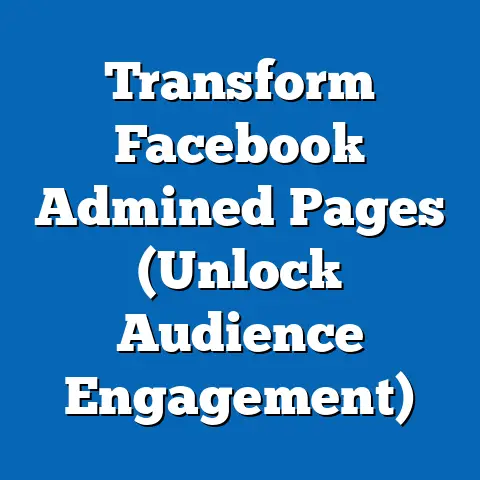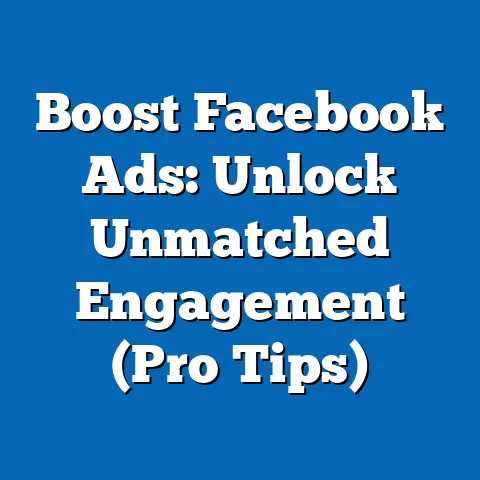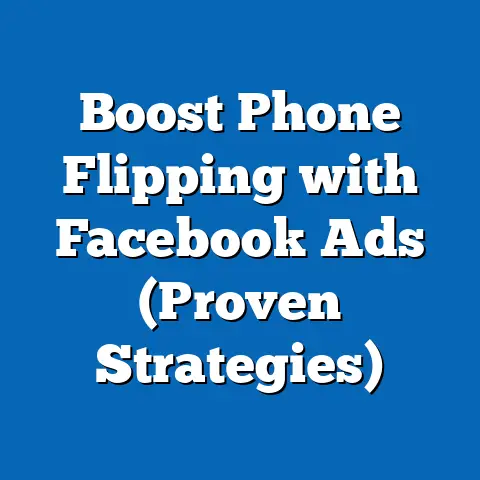Reopen Disabled fb ad Account (Expert Contact Strategies)
Reopen Disabled Facebook Ad Accounts: Expert Contact Strategies for Cost-Effective Solutions
Facebook advertising is a cornerstone for countless businesses and marketers. It’s a powerful tool that, when wielded correctly, can unlock incredible growth and engagement. But what happens when that tool is suddenly taken away? A disabled Facebook ad account can be a nightmare, leading to lost revenue, missed opportunities, and a whole lot of frustration.
I’ve been there. I remember one instance where a client’s ad account was inexplicably shut down right before a massive product launch. The panic was palpable. Not only was there the immediate loss of potential sales, but also the wasted effort spent crafting the perfect campaign. It felt like we were standing on the edge of a cliff, about to plunge into the abyss.
The good news is, a disabled ad account isn’t always a death sentence. Often, it’s a temporary setback that can be overcome with the right approach. But navigating Facebook’s labyrinthine support system can feel like an impossible task. This is where expert contact strategies come into play.
Think of reopening a disabled Facebook ad account as a cost-benefit analysis. Starting from scratch means losing all your hard-earned data – your custom audiences, your pixel tracking, your campaign history. That’s a significant investment down the drain. Reopening, on the other hand, allows you to leverage that existing foundation. It’s often the more cost-effective route, saving you time, money, and a whole lot of headaches.
1: Understanding Facebook Ad Account Disabling
Before we jump into solutions, it’s crucial to understand why Facebook ad accounts get disabled in the first place. Think of it like diagnosing an illness before prescribing treatment. Knowing the root cause can significantly improve your chances of a successful recovery.
Here are some common reasons:
- Policy Violations: This is the big one. Facebook has a strict set of advertising policies that cover everything from prohibited content (hate speech, scams, etc.) to restricted content (alcohol, gambling, etc.). Even unintentional violations can trigger a disabling. For example, I once saw an account suspended because the ad copy made an implied claim about weight loss, which violated Facebook’s health and fitness policy.
- Suspicious Activity: Facebook’s algorithms are constantly on the lookout for unusual behavior. Sudden spikes in ad spend, unusual login locations, or multiple failed payment attempts can all raise red flags and lead to a temporary or permanent disabling.
- Payment Issues: If your payment method is declined, expired, or flagged for fraud, Facebook will likely disable your account until the issue is resolved.
- User Feedback: Negative feedback from users, such as hiding ads or reporting them for being misleading, can negatively impact your account’s standing and potentially lead to disabling.
- Technical Glitches: While rare, technical glitches can sometimes cause accounts to be incorrectly flagged.
The Implications of a Disabled Account
A disabled ad account can have devastating consequences for your business:
- Lost Revenue: The most immediate impact is the loss of potential sales. If you rely on Facebook ads to drive traffic and conversions, a disabled account can cripple your revenue stream.
- Missed Opportunities: Critical marketing campaigns, such as product launches or seasonal promotions, can be derailed, leading to missed opportunities and lost market share.
- Damaged Brand Reputation: If your ads suddenly disappear, it can create a negative impression among your target audience, potentially damaging your brand reputation.
- Wasted Effort: All the time and effort you invested in creating your campaigns, building your audiences, and optimizing your ads is essentially wasted if your account is disabled.
- Data Loss: As mentioned earlier, starting a new account means losing all your valuable data, including custom audiences, pixel tracking, and campaign history.
The Psychological Impact
It’s easy to overlook the emotional toll that a disabled ad account can take on business owners and marketers. I’ve seen firsthand the stress, anxiety, and frustration it can cause. It feels like a personal attack, especially if you believe you haven’t done anything wrong.
The urgency to get the account back up and running can be overwhelming, leading to rash decisions and further mistakes. This is why it’s crucial to approach the situation calmly and strategically.
Key Takeaway: Understanding the reasons behind ad account disabling and the potential consequences is the first step towards a successful recovery. It helps you identify the problem, assess the damage, and develop a targeted solution.
2: Initial Steps to Take After Account Disabling
Okay, your account is disabled. What now? Don’t panic! The first few steps you take are crucial in setting the stage for a successful appeal. Think of it like triage in a medical emergency – you need to assess the situation, stabilize the patient, and prepare for further treatment.
Here’s a breakdown of the immediate actions you should take:
-
Document Everything: Before you do anything else, meticulously document your account’s history and ad performance. This includes:
- Screenshotting your account dashboard, including your ad spend, reach, and conversions.
- Downloading your ad reports for the past few months.
- Creating a detailed log of any recent changes you made to your campaigns or account settings.
- Gathering any relevant invoices or receipts.
This documentation will serve as valuable evidence to support your appeal. I once helped a client whose account was disabled due to a suspected payment issue. By providing screenshots of their billing history and bank statements, we were able to quickly prove that the issue was a technical glitch on Facebook’s end. 2. Review Facebook’s Advertising Policies: This is non-negotiable. Even if you think you know the policies inside and out, take the time to carefully review them. Pay close attention to any updates or changes that may have occurred recently.
Identify any potential violations, even if they seem minor. Honesty and transparency are key when dealing with Facebook support. If you made a mistake, own up to it. 3. Prepare Necessary Information for the Appeal Process: You’ll need to gather the following information: * Your Business Manager ID. * Your Ad Account ID. * A clear and concise explanation of why you believe your account was wrongly disabled. * Any supporting documentation that proves your compliance with Facebook’s policies. * Your contact information (email address and phone number).
Having this information readily available will streamline the appeal process and demonstrate your preparedness.
Document Everything: Before you do anything else, meticulously document your account’s history and ad performance. This includes:
- Screenshotting your account dashboard, including your ad spend, reach, and conversions.
- Downloading your ad reports for the past few months.
- Creating a detailed log of any recent changes you made to your campaigns or account settings.
- Gathering any relevant invoices or receipts.
This documentation will serve as valuable evidence to support your appeal. I once helped a client whose account was disabled due to a suspected payment issue. By providing screenshots of their billing history and bank statements, we were able to quickly prove that the issue was a technical glitch on Facebook’s end. 2. Review Facebook’s Advertising Policies: This is non-negotiable. Even if you think you know the policies inside and out, take the time to carefully review them. Pay close attention to any updates or changes that may have occurred recently.
Identify any potential violations, even if they seem minor. Honesty and transparency are key when dealing with Facebook support. If you made a mistake, own up to it. 3. Prepare Necessary Information for the Appeal Process: You’ll need to gather the following information: * Your Business Manager ID. * Your Ad Account ID. * A clear and concise explanation of why you believe your account was wrongly disabled. * Any supporting documentation that proves your compliance with Facebook’s policies. * Your contact information (email address and phone number).
Having this information readily available will streamline the appeal process and demonstrate your preparedness.
The Cost-Effectiveness of These Initial Steps
These initial steps might seem time-consuming, but they’re incredibly cost-effective in the long run. By taking the time to document everything, review the policies, and gather the necessary information, you’re significantly increasing your chances of a successful appeal.
Think of it this way: spending a few hours upfront could save you weeks or even months of lost revenue and wasted effort. It’s an investment that pays off handsomely.
Key Takeaway: Taking these initial steps immediately after your account is disabled is crucial for a successful recovery. It demonstrates your commitment to compliance, provides valuable evidence to support your appeal, and streamlines the overall process.
3: Expert Contact Strategies
Now we get to the heart of the matter: how to actually reach out to Facebook and get your account reinstated. This is where expert contact strategies come into play. It’s not just about sending a generic email and hoping for the best. It’s about understanding how Facebook’s support system works and leveraging the right channels to get your message heard.
3.1: Direct Communication with Facebook Support
This is the most obvious and often the most frustrating option. Facebook’s support system can feel like a black hole, with long response times and generic replies. However, persistence and a strategic approach can yield results.
Here are the different ways to reach Facebook support:
- Live Chat: This is often the fastest way to get a response, but it’s not always available. To access live chat, you’ll typically need to navigate to the Facebook Business Help Center and look for the “Chat with a representative” option. Keep in mind that live chat is often reserved for advertisers with higher ad spends.
- Email: You can submit a support ticket through the Facebook Business Help Center. Be prepared for a potentially long wait time for a response.
- Help Center: The Facebook Business Help Center is a treasure trove of information. You can find answers to common questions, troubleshooting guides, and policy explanations.
Templates for Initial Contact
Crafting a clear, concise, and professional initial contact email is crucial. Here’s a template you can adapt:
Subject: Urgent: Disabled Ad Account – [Your Business Manager ID] – [Your Ad Account ID]
Body:
Dear Facebook Support Team,
I am writing to request a review of my disabled ad account, [Your Ad Account ID], which is associated with Business Manager ID [Your Business Manager ID].
My account was recently disabled, and I am unsure of the exact reason. I have carefully reviewed Facebook’s advertising policies and believe that I have not violated any of them.
I rely on Facebook advertising to [briefly explain your business and its reliance on Facebook ads]. A disabled account significantly impacts my business operations and revenue.
I have attached relevant documentation, including [list the documents you’re attaching, e.g., ad reports, billing statements].
I would appreciate it if you could investigate this matter urgently and provide me with a clear explanation of why my account was disabled. I am committed to complying with Facebook’s policies and am willing to take any necessary steps to rectify the situation.
Thank you for your time and attention to this matter.
Sincerely,
[Your Name]
[Your Contact Information]
Key Tips for Direct Communication:
- Be polite and respectful: Even if you’re frustrated, maintain a professional tone.
- Be clear and concise: Get straight to the point and avoid unnecessary jargon.
- Provide all relevant information: Include your Business Manager ID, Ad Account ID, and any supporting documentation.
- Be patient: Response times can vary, so don’t expect an immediate answer.
3.2: Leveraging Facebook Business Manager
Facebook Business Manager is a powerful tool that can also be used to access support options. Here’s how:
- Navigate to the Help Center: Within Business Manager, click on the question mark icon in the top right corner to access the Help Center.
- Search for Your Issue: Use the search bar to find articles and guides related to disabled ad accounts.
- Contact Support: Look for the “Contact Support” option within the Help Center. This will typically lead you to a form where you can submit a support ticket.
Maintaining a Complete and Accurate Business Profile
Ensuring your Business Manager profile is complete and accurate is crucial. This includes:
- Verifying your business.
- Adding all relevant business information, such as your website, address, and phone number.
- Assigning roles and permissions to your team members.
A complete and accurate profile demonstrates to Facebook that you’re a legitimate business, which can increase your chances of getting your account reinstated.
3.3: Utilizing Community Resources and Forums
Don’t underestimate the power of community! Facebook groups, forums, and online communities are filled with advertisers who have experienced similar issues. Sharing your experience and seeking advice from others can be incredibly helpful.
Examples of Successful Cases
I’ve seen countless instances where community advice led to accounts being reopened. For example, I remember one advertiser who was struggling to get a response from Facebook support. After posting in a Facebook group, another member suggested that they try contacting a specific Facebook representative who had helped them in the past. This connection ultimately led to the advertiser getting their account back up and running.
Key Tips for Utilizing Community Resources:
- Be specific: Clearly explain your situation and the steps you’ve already taken.
- Be respectful: Treat other members with courtesy and respect.
- Be cautious: Not all advice is created equal. Be sure to vet any suggestions before implementing them.
3.4: Building a Relationship with a Facebook Representative
This is the holy grail of Facebook ad account recovery. Having a direct line of communication with a Facebook representative can significantly expedite the process.
Benefits of Establishing a Rapport
A Facebook representative can:
- Provide personalized support and guidance.
- Escalate your issue to the appropriate team.
- Offer insights into why your account was disabled and how to prevent it from happening again.
Tips for Effective Communication
- Be proactive: Reach out to Facebook representatives through industry events, webinars, or online communities.
- Be respectful: Treat them as valuable partners.
- Be persistent: Follow up regularly without being overly aggressive.
- Be prepared: Have all your information readily available.
3.5: Using Social Media to Gain Visibility
While not a guaranteed solution, using social media platforms like Twitter or LinkedIn can sometimes help you get your issue noticed by Facebook support.
Examples of Successful Outreach
I’ve seen advertisers successfully use Twitter to publicly address their concerns and tag Facebook’s support team. This can sometimes generate a faster response, especially if your tweet gains traction.
Key Tips for Using Social Media:
- Be professional: Avoid ranting or making personal attacks.
- Be concise: Clearly explain your issue in a tweet or short post.
- Use relevant hashtags: Use hashtags like #FacebookAds, #FacebookSupport, or #AdvertisingHelp.
- Tag Facebook support: Tag @FacebookAds or @MetaBusiness in your tweet or post.
Key Takeaway: Employing a multi-pronged approach to contacting Facebook support is crucial. Don’t rely on just one channel. Leverage direct communication, Business Manager, community resources, and social media to maximize your chances of success.
4: Crafting an Effective Appeal
Once you’ve made contact with Facebook support, the next step is to craft a compelling appeal. This is your opportunity to present your case and convince Facebook that your account should be reinstated. Think of it as your day in court – you need to present a clear, convincing, and well-supported argument.
Here’s a breakdown of the elements of a successful appeal letter:
-
Be Concise, Respectful, and Factual:
- Get straight to the point and avoid unnecessary fluff.
- Maintain a professional and respectful tone throughout the letter.
- Stick to the facts and avoid emotional appeals.
I once reviewed an appeal letter that was filled with anger and accusations. It was immediately dismissed by Facebook support. Remember, you’re trying to persuade them, not alienate them. 2. Acknowledge the Issue: * Demonstrate that you understand why your account was disabled. * If you made a mistake, own up to it and explain how you’ve rectified the situation. * If you believe your account was wrongly disabled, clearly explain why. 3. Provide Evidence: * Include any supporting documentation that proves your compliance with Facebook’s policies. * This might include ad reports, billing statements, website analytics, or testimonials from satisfied customers. 4. Explain the Impact: * Clearly explain how the disabled account is impacting your business. * Quantify the impact in terms of lost revenue, missed opportunities, or damaged brand reputation. 5. Offer a Solution: * Propose a plan of action to prevent future violations. * This might include implementing stricter quality control measures, providing additional training to your team, or revising your advertising strategy. 6. Express Gratitude: * Thank Facebook support for their time and consideration. * Reiterate your commitment to complying with their policies.
Be Concise, Respectful, and Factual:
- Get straight to the point and avoid unnecessary fluff.
- Maintain a professional and respectful tone throughout the letter.
- Stick to the facts and avoid emotional appeals.
I once reviewed an appeal letter that was filled with anger and accusations. It was immediately dismissed by Facebook support. Remember, you’re trying to persuade them, not alienate them. 2. Acknowledge the Issue: * Demonstrate that you understand why your account was disabled. * If you made a mistake, own up to it and explain how you’ve rectified the situation. * If you believe your account was wrongly disabled, clearly explain why. 3. Provide Evidence: * Include any supporting documentation that proves your compliance with Facebook’s policies. * This might include ad reports, billing statements, website analytics, or testimonials from satisfied customers. 4. Explain the Impact: * Clearly explain how the disabled account is impacting your business. * Quantify the impact in terms of lost revenue, missed opportunities, or damaged brand reputation. 5. Offer a Solution: * Propose a plan of action to prevent future violations. * This might include implementing stricter quality control measures, providing additional training to your team, or revising your advertising strategy. 6. Express Gratitude: * Thank Facebook support for their time and consideration. * Reiterate your commitment to complying with their policies.
Case Studies of Effective Appeals
I’ve seen countless successful appeals over the years. Here are a few examples:
- The “Accidental Violation” Appeal: An advertiser’s account was disabled because one of their ads inadvertently used a prohibited image. In their appeal, they acknowledged the mistake, removed the image, and implemented stricter quality control measures to prevent similar violations in the future. Their account was reinstated within 24 hours.
- The “Suspicious Activity” Appeal: An advertiser’s account was disabled due to a sudden spike in ad spend. In their appeal, they explained that the spike was due to a planned marketing campaign and provided documentation to support their claim. Their account was reinstated within 48 hours.
- The “Technical Glitch” Appeal: An advertiser’s account was disabled due to a suspected payment issue. In their appeal, they provided screenshots of their billing history and bank statements to prove that the issue was a technical glitch on Facebook’s end. Their account was reinstated within a few hours.
Checklist for Appeal Submission
Before submitting your appeal, make sure you’ve included the following:
- Your Business Manager ID.
- Your Ad Account ID.
- A clear and concise explanation of why you believe your account was wrongly disabled.
- Any supporting documentation that proves your compliance with Facebook’s policies.
- Your contact information (email address and phone number).
- A plan of action to prevent future violations.
Key Takeaway: A well-crafted appeal is your best chance of getting your account reinstated. Be concise, respectful, factual, and provide as much evidence as possible to support your claim.
5: Monitoring and Follow-Up
Submitting your appeal is just the first step. Now, you need to monitor the status of your appeal and follow up appropriately. Think of it like planting a seed – you need to water it, fertilize it, and protect it from pests to ensure it grows into a healthy plant.
Importance of Monitoring the Appeal Status
Keeping track of your appeal status allows you to:
- Know when to expect a response.
- Identify any delays or issues.
- Take appropriate action if necessary.
Timeline for Expecting Responses
Response times can vary depending on the complexity of your case and the volume of support requests Facebook is currently handling. However, here’s a general timeline you can expect:
- Initial Acknowledgement: You should receive an automated email acknowledging receipt of your appeal within 24-48 hours.
- Review Process: The actual review process can take anywhere from a few days to a few weeks.
- Final Decision: You’ll receive an email notifying you of Facebook’s decision.
How to Approach Follow-Ups Professionally
If you haven’t heard back from Facebook within the expected timeframe, it’s appropriate to follow up. However, it’s important to do so in a professional and respectful manner.
Here are some tips:
- Be Patient: Don’t bombard Facebook support with multiple follow-up emails.
- Be Polite: Maintain a professional and courteous tone.
- Be Specific: Reference your original appeal and provide any relevant updates.
- Be Persistent: Don’t give up easily. Follow up regularly until you receive a response.
Keeping Records of All Communications
It’s crucial to keep detailed records of all your communications with Facebook support. This includes:
- Saving all emails and chat transcripts.
- Documenting the dates and times of all phone calls.
- Creating a log of all actions you’ve taken to resolve the issue.
This documentation will be invaluable if you need to escalate your case or seek further assistance.
Key Takeaway: Monitoring your appeal status and following up appropriately is crucial for a successful outcome. Be patient, persistent, and keep detailed records of all your communications.
6: Preventative Measures for the Future
Getting your account reinstated is a victory, but it’s important to learn from the experience and take preventative measures to avoid future disabling. Think of it like getting a flu shot – it’s a proactive step that can protect you from getting sick in the future.
Here are some best practices for maintaining a healthy Facebook ad account:
- Stay Up-to-Date on Facebook’s Advertising Policies: Facebook’s policies are constantly evolving. Make it a habit to regularly review the policies and stay informed of any updates or changes.
- Implement Strict Quality Control Measures: Before launching any new ads, carefully review them to ensure they comply with Facebook’s policies. This includes checking the ad copy, images, landing pages, and targeting options.
- Monitor Your Account Regularly: Keep a close eye on your account’s performance and address any issues promptly. This includes monitoring your ad spend, reach, conversions, and user feedback.
- Provide Additional Training to Your Team: Ensure that all members of your team who are involved in creating or managing Facebook ads are thoroughly trained on Facebook’s advertising policies.
- Use Facebook’s Tools and Resources: Facebook provides a variety of tools and resources to help advertisers comply with their policies. Take advantage of these resources, such as the Facebook Business Help Center and the Facebook Ads Library.
- Be Transparent with Facebook: If you make a mistake, own up to it and take steps to rectify the situation. Honesty and transparency are key to building trust with Facebook.
- Diversify Your Advertising Channels: Don’t put all your eggs in one basket. Diversify your advertising channels to reduce your reliance on Facebook.
Ongoing Education
Continuously educating yourself and your team on Facebook’s advertising policies is crucial. This can include:
- Attending industry events and webinars.
- Reading blog posts and articles about Facebook advertising.
- Participating in online communities and forums.
Key Takeaway: Taking preventative measures is the best way to avoid future ad account disabling. Stay informed, implement strict quality control measures, and be proactive in monitoring your account.
Conclusion
Reopening a disabled Facebook ad account can be a challenging and frustrating process, but it’s often the most cost-effective solution compared to starting from scratch. By employing expert contact strategies, crafting a compelling appeal, and taking preventative measures, you can significantly increase your chances of success.
Remember, cost-effectiveness isn’t just about saving money. It’s also about saving time, effort, and stress. By taking a strategic and proactive approach, you can minimize the impact of a disabled ad account on your business and get back to driving results with Facebook advertising.
I know firsthand how daunting this process can be. But with the right knowledge and a determined attitude, you can overcome this challenge and emerge stronger than ever. Don’t give up! Your Facebook ad account – and your business – is worth fighting for. So, take these strategies, put them into action, and reclaim your advertising power. You’ve got this!






